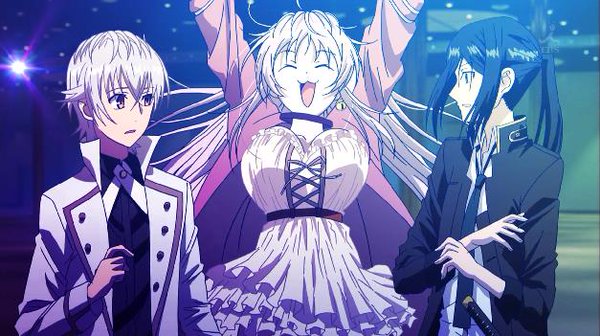K: Return of Kings
April 24, 2019 · 0 comments
By Meghan Ellis.
 The colourful romp that is K project’s first series is a tough act to follow. But K: Return of Kings takes the task seriously, continuing the story from prequel movie K: Missing Kings and moving the conflict of the universe into its second stage. And with this escalation comes a bigger understanding by studio GoHands about what makes this world of giant swords and errant gangsters great – it has, and will continue to be, the sheer spectacle of it all. Return of Kings builds on everything the first series introduced: the visual storytelling and frankly obscene use of colour; the gangs who share fashion, attitude, and fighting style; the unashamed use of CG that somehow just works.
The colourful romp that is K project’s first series is a tough act to follow. But K: Return of Kings takes the task seriously, continuing the story from prequel movie K: Missing Kings and moving the conflict of the universe into its second stage. And with this escalation comes a bigger understanding by studio GoHands about what makes this world of giant swords and errant gangsters great – it has, and will continue to be, the sheer spectacle of it all. Return of Kings builds on everything the first series introduced: the visual storytelling and frankly obscene use of colour; the gangs who share fashion, attitude, and fighting style; the unashamed use of CG that somehow just works.
It’s an improvement in all these areas, but the second series is where the soundtrack truly comes into its own. Created by composer Mikio Endo, who showcases her jazz roots with a hectic mish-mash of styles, these are tunes not just content to accompany but to be as present as the visual action itself. Fittingly, sound director Chikako Yokota’s previous credits also include an unusual mix of idol shows and thrillers, and K: Return of Kings has the best bits of both.
No, really: the opening is sung by veteran idol Yui Horie and features new Red King Anna Kushina (also voiced by Horie) singing along to the vocals in a way reminiscent of idol anime. Only the lyrics aren’t sunshine and rainbows, as Anna sings about the conflict between feeling safe versus honouring bonds between gang members. Not particularly standard idol fare. Instead, it’s a perfect framing device for K: Return of Kings’ central concerns of the war between the Silver and Green clans and the struggle to continue after unexpected loss.
After the opening, the soundtrack of K’s second outing is an eclectic soundscape from the very first episode, where we’re greeted with an updated take on the original themes and their piano arpeggios and underlying hip-hop beats. This is a show that loves to choreograph its fight scenes to carefully composed tracks; it’s mentioned early on that clashes between the Red and Blue clans look more dance battle than dangerous warfare. And as incongruous as it seems to fight fire with skateboards, only music as ensemble as Endo’s could hope to fit the routine.
Does it work, in the end? A fusion score can be hard to script, but K: Return of Kings isn’t afraid to let it tell the story. Often we’ll hear the tracks mingle and bleed into one another episode by episode, culminating in a final musical sequence that’s nuanced because we’ve learned to read what it tries to say. Think of when the main theme of a beloved show kicks in during a fight scene: K does that over and over with its musical motifs, letting the music take place of dialogue where it counts.
K: Return of Kings is pure spectacle, but with the soundtrack as with the sum of its parts, Director Shingo Suzuki never lets “so much” become “too much.”
Meghan Ellis blogs about pop culture at meghanon.co.uk. K: Return of Kings is released in the UK by Anime Limited.
Leave a Reply